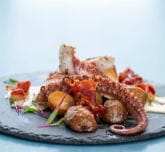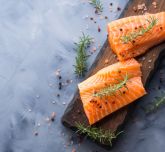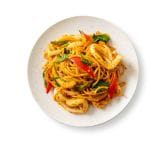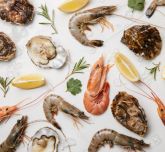
For 1,4 billion people in the world
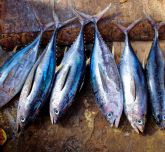
+6.9 is the estimated CAGr growth

With 87 kilos per capita per year

The worldwide seafood product market
Seafood (fish and shellfish) represents an important source of protein as an alternative to meat in terms of animal protein. It is even the main form of protein intake for 1.4 billion people in the world, representing 20% of their total food intake.
Over the last 60 years, the consumption of seafood has doubled around the world, rising from 10 kg per person in 1960 to more than 20 kg in 2019 according to a report by Statista. This makes it an important global consumer sector, representing USD 624 billion in sales in 2023, with an estimated CAGR of 6.9% between 2023 and 2028.
Asia, the leading consumer of fish and shellfish
Asia today accounts alone for more than half of the global market, with sales of USD 340 billion in 2022.
Topping the charts as the largest consumers of marine food are the Maldives, with 87 kg per habitant per year. Second in the list is Iceland with 84 kg of seafood consumed per person.
Well known for its fish focussed specialities, Japan stands out for its consumption of seafood. Three Japanese people out of five eat seafood regularly, at least twice a week.
Due to its population, China is the country that consumes the most seafood by volume. With regions such as Macao and Hong Kong whose inhabitants are among the largest consumers of seafood, the country lies in seventh place for the consumption of fish and shellfish, but the first in volume, with 65 million tonnes eaten per year.
Seafood consumption in Europe
Europe is also a substantial market for seafood. Consumption stands on average at approximately 23 kg per year and per inhabitant for total sales of $147billion in 2022.
In 2021, household spending on fish and seafood in the EU increased by 7% compared to 2020, continuing the upward trend already recorded between 2019 and 2020. This increase is well above the 1.5% inflation in the prices of fishery and aquaculture products, suggesting that EU households indeed spent more money on these products, most likely due to the lasting effects of the COVID-19 pandemic, which led to an increase in the need to stay at home, and therefore in consumption at home. Nevertheless, according to Euromonitor's estimates, out-of-home consumption has also increased, and this growth is expected to continue and then stabilise over the period 2024-2026.
In the European Union, the highest consumers of fish and seafood are the Portuguese, far ahead of the rest, with 56.8 kg per capita per year, followed by the Spanish with 45.6 kg and finally the Maltese, who eat an average of 37 kg. Just behind them are the French and Luxembourgers, who each consume an average of 33.7 kg per capita per year.
France and seafood
French consumers remain very fond of seafood products. Each year, they consume an average of 33 kg per person, for a total of €7 billion of spending. This trend is set to continue, since 32% of French consumers say they intend to eat more seafood products.
In 2021, consumption in France reached a five-year peak, with growth of 6% in volume and 5% in value compared to the previous year. Salmon was the main driver of growth, with a 12% increase in 2021, following a 27% increase in 2020.
In general, French consumers are sensitive to the origin of products, their traceability - which is not necessarily a given in this industry - and labels such as organic, the Pavillon France trademark and MSC.
Furthermore, a substantial proportion of demand (20%) is satisfied by French fisheries. The rest is provided by imports and aquaculture, with the latter benefiting from an increasingly positive image among consumers.
Fish
As mentioned above, consumers appreciate salmon (whole, in fillets or smoked), which generally comes from Norway or Scotland. This fish is quoted as an essential foodstuff by 70% of French consumers, and its sales rose by 8% in 2018.
On the other hand, the French are less keen on exotic fish. Sales of Nile perch, panga or tilapia began strongly when these new species arrived on the market, but the bubble has since burst. Most of these fish are more likely to be found in the frozen food sector due to their appeal in terms of cost and their lower bone content.
Shellfish and seafood
Sales of lobster, Dublin Bay prawns, scampi, oysters and scallops are particularly strong at the end of the year during the festive season. These high quality specialities, whose prices tend to frighten off most consumers during the rest of the year, are particularly sought after for the traditional Christmas Eve and New Year’s Eve dinners.
These products are also increasingly considered as meat substitutes by consumers. They could therefore consequently be consumed more often. According to a Kantar TNS survey for the Norwegian Seafood Council, out of the 36% of French people who wish to reduce their meat consumption, 41% would prefer to do so with seafood rather than with vegetable protein. In the coming years, the market could grow by 5% in 2022.
Fish and seafood at SIAL
Other sectors presented at SIAL
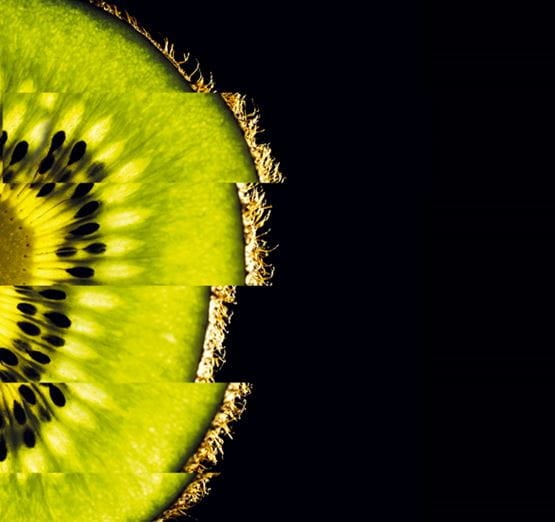
INSPIRING FOOD BUSINESS WORLWIDE
- Food & Drinks Malaysia - Kuala Lumpur
- SIAL Canada - Montreal
- SIAL Canada - Toronto
- SIAL Paris - Paris
- SIAL in China - Shanghai
- SIAL in China - Shenzhen
- SIAL in India - New Delhi
- SIAL Interfood - Jakarta
- Gourmet Selection - Paris
- Cheese & Dairy products show - Paris
- Djazagro - Algiers


